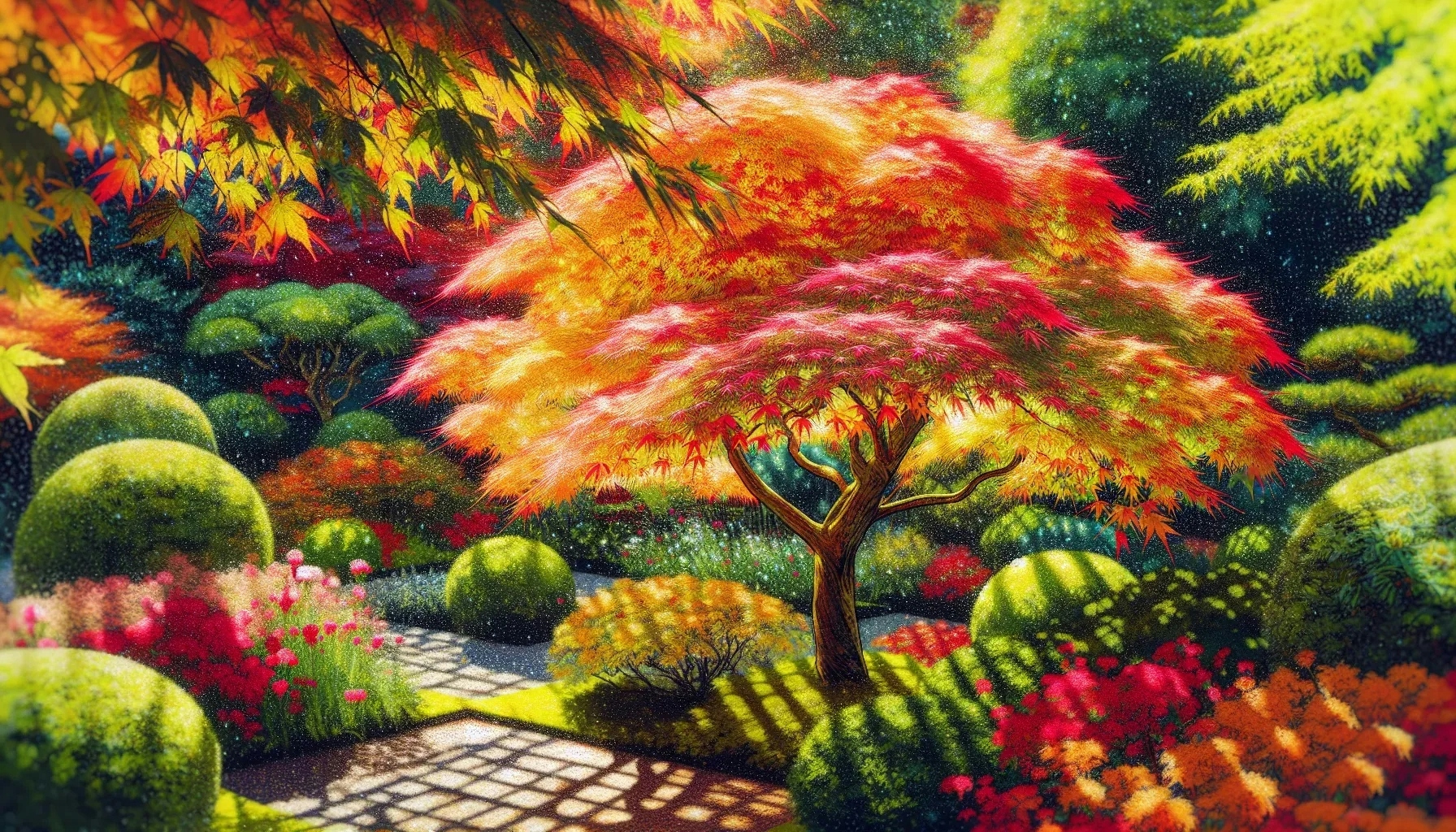What Plant Selections Significantly Enhance Garden Aesthetics for a Landscape Architect?
In the art of landscape architecture, the choice of plants can dramatically transform a garden's appeal. We've gathered eight seasoned Landscape Architects to reveal their most impactful plant selections, from the strategic use of Ponytail Palms to the final touch of Coarse-Textured Evergreens in urban spaces.
- Ponytail Palms Create Tropical Focal Points
- Contrasting Foliage Colors Draw the Eye
- Itea Virginica Enhances with Spring Blooms
- Paperbark Maple Adds Texture and Color
- Blue Fescue Unifies Modern Garden Design
- Velvet Mesquite Infuses Desert Essence
- Camellias Bloom for Winter Garden Appeal
- Coarse-Textured Evergreens for Urban Spaces
Ponytail Palms Create Tropical Focal Points
Ponytail Palms are unique accent plants that have both a Jurassic and Dr. Seuss appearance that grabs your attention. With a sculptural trunk that grows in a distorted fashion and weeping leaves, Ponytail Palms are a tropical focal point when planted in masses of shrubs and ground cover. To add contrast and interest to any garden, plant a Ponytail Palm to enhance your outdoor space.

Contrasting Foliage Colors Draw the Eye
I don't have a specific plan, but I always find that going for contrasting foliage colors makes a planting design pop! I especially love situating dark, purple plants next to bright yellow ones; it draws the eye (especially in shade gardens), and you don't depend on flowers for interest. A favorite pairing of mine is Purple Ninebark (Physocarpus opulifolius) planted next to a Golden Bleeding Heart (Dicentra spectabilis 'Gold Heart').
Coral Bells (Heuchera spp.) can also be great for adding contrast and color to a garden since they come in a rainbow of colors and are very hardy! Some of my top colorful picks include 'Cherry Cola', 'Citronelle', and 'Midnight Rose'.
Itea Virginica Enhances with Spring Blooms
One of my favorites and most used in almost every planting design is Itea virginica 'Little Henry.' This dwarf version of the native Virginia sweetspire has lovely spring blooms (white) that work with any color palette, and the fall color is outstanding. The plant loves sun but is very easy to grow and maintain, and can really make a statement when planted en masse.

Paperbark Maple Adds Texture and Color
The Paperbark maple (Acer griseum) is a plant choice that significantly enhanced the aesthetic aspect of a garden I recently designed. This deciduous tree, native to central China, is admired for its unique coppery-red bark that curls and peels, much like paper. Its rounded, compact shape makes it an ideal centerpiece, while its attractive, trifoliate leaves transition from green in summer to a fiery red in autumn, adding a dramatic color shift that extends the garden's visual interest into the colder months. This selection proved transformative, bringing a new level of texture, color, and year-round appeal to the garden design.

Blue Fescue Unifies Modern Garden Design
As a landscape architect, selecting the right plant can dramatically transform a garden's aesthetic. One particularly impactful choice was incorporating the Blue Fescue (Festuca glauca) into a modern, minimalist garden design. This ornamental grass, with its striking blue-gray foliage, created a stunning contrast against the garden's predominantly green palette. I used it to border pathways and interspersed it among larger shrubs, where its spherical shape and unique color added depth and texture. The Blue Fescue's low height and distinctive hue became a unifying element in the garden, tying together various sections and creating visual interest throughout the seasons. This choice not only enhanced the garden's contemporary feel but also demonstrated how a single, well-chosen plant can have a significant impact on the overall design aesthetic.

Velvet Mesquite Infuses Desert Essence
Prosopis velutina, commonly known as Velvet Mesquite, is a preferred choice in my landscape projects. Indigenous to the region, this plant not only enhances aesthetic appeal but also infuses any landscape design with the unique essence of the Sonoran Desert. Its vase-shaped, multi-trunk structure is versatile, serving as an ideal backdrop for both a desert garden and a vibrant riparian landscape. When the distinctive twisted and irregular form of a Velvet Mesquite specimen is articulated, it transforms into a sculptural focal point that requires no additional planting to anchor the overall landscape.

Camellias Bloom for Winter Garden Appeal
The hardest part about answering this question is narrowing it down to just one plant! I had to change my answer several times while I was considering the question. But in general, I consider all four seasons when making plant selections and like to use plants that will have appeal all year round. So, because camellias bloom in the winter, I had to pick them as one of my plant selections that has significantly enhanced the aesthetic of the garden, especially in the winter months!
Coarse-Textured Evergreens for Urban Spaces
Over the past 25 years of monitoring plant installations, I have found that the most successful planting plans incorporate coarse-textured evergreens that do not overpower the space.
I like including junipers such as 'Hollywood', 'Mountbatten', and 'Emerald Sentinel'. 'Gracilis' Hinoki cypress intermixed with a white dogwood creates a contrasting visual effect.
In urban settings where space is limited, the inclusion of columnar trees has been a must. Examples of these trees include the Columnar English Oak, Columnar Cherry, Red Obelisk Beech, 'Taylor' Red Cedar, and 'DeGroot's Spire' Arborvitae.

